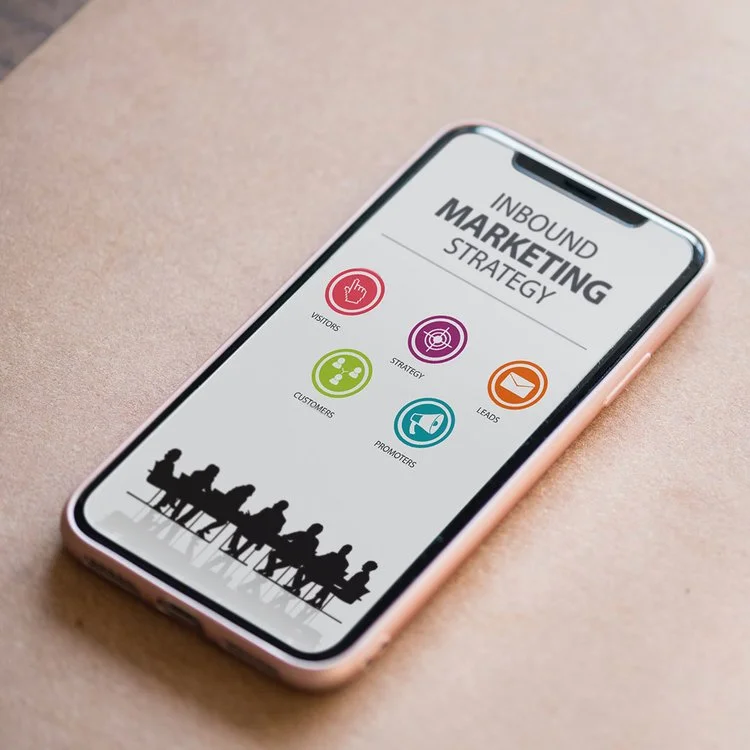Is Machine Learning/AI Eliminating Human Input From Digital Marketing?
As advertising dives deeper into automation, it’s hard not to feel uncertain about the industry’s future. Because, without a shred of doubt, artificial intelligence (AI) and machine learning will take the reins of many responsibilities of the traditional marketer. What’s also fascinating is that it’s not only the individuals working in the industry that are fearful, it’s their clients as well.
Ethos Copywriting has worked with several business owners that have expressed uncertainty about implementing AdWords—not because of the cost, but because PPC ads can seem to be devoid of that human input that people associate with the “golden-age of advertising.”
Tracking tags, device targeting, remarketing... it all seems so cold and calculated. Not to mention, it can feel a little disconcerting to be paying Google—an already ridiculously powerful company—such great sums of money each month. According to Search Engine Island, the search giant rakes in 36.7 billion dollars a year in AdWords alone.
However, there are other industries (most notably, agriculture and manufacturing) where millions of workers have been replaced by machines over the past few decades. Yet, the future may not be as bleak as many believe.
While it may seem counter-intuitive, automation and machine learning could actually reinvigorate many industries, as their constituent work will revolve more around building communicative, reliable, valuable brands rather than focusing on monotonous tasks, such as sifting through data, pumping out parts, or hand-picking produce. So with all that in mind, let’s take a dive into the good, the bad, and the ugly of automation.
Innovation: The Destruction and Creation of Jobs
You know what most people are really good at? Being human.
Yet with many jobs, we’re just acting as extensions of a computer, conveyor belt, or vehicle. Then every decade or so, some new technology emerges that sends everyone into a tailspin as they feel their roles fade into obsolescence.
But look, we’ve been here before and we’ll be here again. Automation is not a new concept. Fears have been percolating in the workplace for centuries, even prior to the Industrial Revolution.
Interestingly, in 1964, U.S. President Lyndon Johnson appointed the National Commission on Technology, Automation, and Economic Progress to report their findings pertaining to Technology and the American Economy.
Researchers found that many jobs were indeed eliminated, especially as steam locomotives were replaced by diesel engines, farming became increasingly industrialized, and large portions of houses were being prefabricated. However, they also found that, “innovation can destroy an occupation, create an entirely new one, or transform radically the content of what appears on paper to be the same occupation.”
To put it into clichéd terminology: as technology closes one door, another one opens.
At this point you may be thinking: Back then we were going from steam to diesel and farm hands to tractors, now we’re looking at going from human capital to artificial intelligence...we’re done for! Unfortunately, we can’t say that your fears aren’t rooted in at least some reasonability.
Case in point, a 2017 report by McKinsey Global Institute, a leading private-sector think tank, suggested that 60% of occupations have at least 30% of constituent work activities that could be automated. Thankfully, research estimates that less than five percent of occupations consist entirely of activities that could be fully automated.
The Shift from Information to Imagination
The shift to automation is a scary thought, especially for those in the digital marketing sector, many of whom are building data-mining systems that, upon completion, are going to effectively eliminate their positions. However, we can collectively allay some of our fear by remembering that those areas that can be automated are the parts of the daily grind that most of us loathe anyway.
In a recent Think with Google article, Rob Norman, recently retired CEO of GroupM (arguably the largest advertising agency in the world), states, “There’s no need to fear…The work marketers do is becoming more important, not less.”
Norman notes two pivotal innovations during his career: Facebook’s News Feed and Google AdWords. Granted, there were many unintended consequences of both (like Facebook’s recent data snafu and how Google’s targeting is so spot on that it makes you feel like your phone is tapped), but they completely revolutionized advertising.
Furthermore, through an auction-based model with nearly endless campaign customizations, both Google and Facebook shifted the power from businesses with a monster advertising budget to brands that actually provide great content. This is not to say these companies aren’t often one in the same, but it certainly levels the playing field.
Nevertheless, because landing page experience is such an important element of ad ranking, brands have to ensure that their content is exceptional in order to appear at the top of search engine results pages (SERPs), paid or organic. However, because AdWords can be automated to choose certain keywords, write ads, and target a specific audience, some marketers are fearful for their jobs.
On the flip side, some business owners aren’t sure if this kind of impersonal advertising strategy aligns with their brand’s core beliefs. Interestingly, consumers appear to be somewhat on the fence about Search Network and social media ads as it seems that the more relevant the content, the less they mind their presence.
In fact, a report from HubSpot found that up to 57% of online browsers were tolerant of search ads, and actually found relevant search ads to be useful. Likewise, almost 47% of respondents found that properly targeted social media ads were acceptable as well. After all, if you’re going to see an ad, it might as well be relevant.
Of all that Rob Norman has said and written about the advent of new technology, what is most striking is his optimism. He states, “Evolution is insurance against obsolescence. With new tools and technology, we evolved our skills and adapted, and now we have the opportunity to do so again.” Indeed, Norman found that when GroupM further automated their pay-per-click (PPC) campaigns, the need for high-quality employees actually grew.
Norman notes that automation is opening up a whole new battleground for marketers: consumer assistance. As machines do the grunt work, real people can focus on brand relevance, building trust, and simply, helping other people.
Because machines beat humans at processing, “information workers” had to shift to “intelligence workers.” Yet, as algorithms become increasingly better at making predictions, that position too is becoming obsolete.
So, what is left? Answer: Imagination workers.
Norman writes:
“At the heart of succeeding as an imagination worker today is cultivating a deep desire to help people navigate their daily lives and tasks. So my advice is focus on bringing a new level of imagination and creativity to how you serve. Stay focused on the consumer, and ride this wave of the unknown. Take risks. Challenge the status quo. And you’ll not only evolve with the new world—you’ll thrive in it.”
More Jobs and Raised Wages for Providers and Creatives
Another point of optimism about AI and machine learning comes from the fact that it could significantly raise wages for employees, especially as their employers save money from automating their processes. But this bump in pay will not come without its challenges.
McKinsey’s report predicts that between 75 million to 375 million workers (three to 14 percent of the global workforce) will need to switch occupational categories by 2030. Workers will need to adapt with specialized training, higher educational attainment, and aim to receive tech-based certifications.
Paradoxically, many of these new jobs will allow workers to unplug, and the emphasis of their responsibilities will be placed on social and emotional skills, creativity, high-level cognitive capabilities, and teamwork/collaboration. Among the areas that are expected to grow are:
Builders
Care Providers
Creatives
Educators
Managers and Executives
Tech Professionals
Although technology will undoubtedly cause the displacement of many jobs, new, unforeseen occupations will take their place. For instance, McKinsey’s report estimates that the introduction of the personal computer enabled the creation of 15.8 million net new jobs in the United States since 1980, even after accounting for jobs that were displaced.
So, to all of our advertising compatriots, don’t sweat the loss of data processing and aggregation jobs. Yes, a well-organized spreadsheet is awesome—like opium for marketers with a twinge of OCD—but really, there are better ways to spend your time.
Obviously, technology will continue to cause large employment shifts, but it also creates new opportunities and possibilities for people to work as humans and not as mere cogs in the great-digital wheel. But, the positive effects of automation don’t stop there.
If technology raises the wages for employees, it’ll be coupled with elevated levels of consumption. Henceforth, McKinsey predicts that between 300 million and 365 million new jobs could be created from the savings from automation and the subsequent higher rates of spending that follow.
How to Compete in the Age of AI?
Technology is always going to keep marketers on their toes. Keeping our skills sharp, being aware of the latest digital innovations, and knowing how to capture ever-growing mobile traffic are all must-dos. In an interview with Think with Google, Elizabeth Spaulding, Partner and Global Head of Digital at Bain & Company, said:
“Now more than ever, importance is being placed on precision in marketing—reaching the right user in the right moment with the right message. But this level of precision can’t be accomplished by humans alone. Machine learning technology is enabling smarter marketing by allowing marketers to drive customer intimacy at scale. Now, marketers can learn what customers want and react to their changing preferences in real time.”
Ironically, data-driven businesses can actually better focus on the people they're serving. This is because machine learning makes it possible to deliver the exact products, services, and/or experiences the customer wants, when they want it.
Are We Addicted to the Algorithm?
Algorithms are a beautiful thing. These complex processes can optimize our lives, but they can also give corporations a shocking amount of control.
Have you ever thought about something you would like to purchase, a movie you would like to watch, or a book you would like to read, and then miraculously it seems to appear in an ad next time you’re online? Yeah, it’s a little terrifying, and you may think your phone is tapped. However, what’s really happening is the results of a complex set of predictive algorithms.
You’ve probably heard about how Target predicted a teen’s pregnancy before she even knew. How did they do it? Well, when you consider the fact that every customer has a guest ID, and that ID number is tied to credit cards, email addresses, purchase history, demographic information, and a plethora of other personal information, the plausibility of such stories intensifies.
After years of data-mining, Target’s statistician, Andrew Pole, built a pregnancy-prediction model. Presumably, it was pretty accurate judging by the following exchange between a teen’s angry father and a store manager, highlighted in the New York Times:
“My daughter got this in the mail!” The father said to a target manager. “She’s still in high school, and you’re sending her coupons for baby clothes and cribs? Are you trying to encourage her to get pregnant?”
Feeling awful about the objectionable flyer, the manager apologized profusely and even called the father at home to express his mea culpa. However, that conversion went a bit differently than expected.
“I had a talk with my daughter,” said the father to the manager. “It turns out there’s been some activities in my house I haven’t been completely aware of. She’s due in August. I owe you an apology.”
Using historical data, companies can personalize and target consumers with stunning accuracy. In fact, another report by McKinsey, entitled How Retailers Can Keep up with Consumers, found that around 35 percent of what consumers purchased on Amazon and 75 percent of what they watched on Netflix came from product/content recommendations based on such algorithms!
The pervasiveness of systems is staggering to the point that some researchers are pushing for an “FDA for Algorithms.” Ideally, this would limit the power of corporations, prevent unsafe and malicious use of such processes, and potentially require organizations to disclose their methods.
The Ugly Side of a Beautiful Tool
From online dating matches to artificial intelligence, algorithms are controlling the proverbial levers. Millions of data points are collected to accomplish tasks, provide solutions, and optimize processes. Then again, there is a dark side to these calculations.
Cyber criminals exploit algorithms to crack codes, steal private data, and cause “flash crashes.” Furthermore, some assert that algorithms can infringe upon our freewill.
As it turns out, however, artificial intelligence isn’t quite as smart as we thought.
For instance, Microsoft attempted to create a twitter bot named “Tay” back in 2016, which in a number of hours after launch was spewing racist, sexist tweets as well as a few blurbs about how the Holocaust is a farce…Needless to say, Billy boy went back to the drawing board on that one.
Facebook has also come under scrutiny for their use of algorithms. As fake news polluted the internet, Facebook was using human editors to sort out the trash. However, it seemed these copyreaders had a heavy lean toward conservative news bias, according to the Guardian. So, like many tech companies, they turned to algorithms to concoct a solution.
Once their algorithm was in place, The Washington Post did an audit of Facebook’s trending topics. Unfortunately, the social network’s bots couldn’t discern the real news from the fake. Henceforth, our news feeds were once again, populated with total garbage.
They aren’t 100% Accurate…Yet
In Adobe’s State of Online Advertising report, researchers found that, while a large portion of Generation Z (50%) and Millennials (42%) found social media ads relevant to their interests, accurately targeting Gen X (about 20%) and Baby Boomers (about 15%) was exceedingly difficult.
Plus, when people did click on an ad, nearly 50% of those clicks were made on accident! In addition, more than half of people think online ads—relevant or not—are easy to ignore.
If you’re a marketer thinking: well, I’ll just use a pop up then, think again. HubSpot found that a staggering 73% of consumers found pop ups to be the most annoying variety of ad and one of the leading reasons people downloaded an ad blocker.
The problem is that these intrusive ads break trust between brands and consumers. Not to mention, Adobe found that, while 58% of American marketers think they’re doing a great job targeting their audience with relevant information, in reality, only 38% of consumers feel the same way. Subsequently, next time you’re feeling cocky about putting your AdWords on autopilot, remember that the human touch could make a huge difference.
For the Consumers Who Want Less Ads
We love Google AdWords, but we respect consumers who don’t want to see ads. That’s why we always urge brands to craft amazing content and, when and if they want PPC ads, our recommendation is almost always to use the Search and Shopping Networks. This way brands are still providing relevant content at a time when their customers are searching for it.
Anyhow, if you’re a consumer who can’t take the ads, there are ways to limit the amount you see. First, drop by Chrome’s web store and download an ad blocker. Read through some reviews to find one that works for you. We’re big fans of AdBlock.
If you do decide to download an ad blocker, welcome to the club. In 2016, eMarketer found that 63.2 million downloaded one for their computers and another 20.7 million for their mobile devices due to the over-saturation of adverts.
On another note, because most digital ads are populated based on search history, consider doing your shopping in an Incognito window in Chrome. This is especially helpful if you share a computer and you’re trying to buy a gift for someone (i.e. if you’re shopping for an engagement ring, there is a good chance your browser window will be littered with jewelry ads for the next few weeks).
Finally, limit the amount of information you list on your social media accounts. That anonymity is not only good for limiting targeted ads, but it will also reduce the amount of information available to cyber criminals.
How Digital Marketing Firms Can Embrace AI and Machine Learning
Prepare Your Workforce: Business leaders need to prepare their employees with the proper certifications and training to maximize the benefits of automation. As agencies adopt new technologies, processes will change. As such, the responsibilities of the staff will also change. As tasks shift, focus your employees’ attention to catering to customers, building the brand, and curating a confident public image.
Re-imagine Your Workday: Take advantage of the benefits of AI and machine learning. Become—as Norman said in the Think with Google interview—an “imagination worker.” Create teams that operate as think tanks, hone proficiencies and talents, study, and engage in philanthropic efforts. Companies shouldn’t be afraid to break the pattern of the traditional workday. Plus, does anyone in the advertising and marketing industry actually work a standard nine to five anymore?
Review Your Workflow: There are going to be a lot of changes in the coming year. But to uncover those productivity gains and monetary savings, you’re going to need to thoroughly review your internal processes. Ask yourself: Are tasks being done twice? Are talented employees being misallocated? Does remote work make more sense?
Know How To Analyze Results: Whether it’s understanding the results of an AdWords campaign or the data from an embedded system, the idea remains the same: if you don’t have data, it's extremely difficult to make an educated next step. While you’re at it, find a CMS that can keep track of clients, employees, and product/service details.
We’re Here to Help
These are wild times, there is no doubt about it. Marketing agencies, Ethos Copywriting included, are still learning more every day. However, there are a few things we know for sure:
Customer Support is about being human. Use the time automation frees up to better care for your clients. When you take the time to curate an unforgettable experience for them, your business will flourish.
Progression is Always Better than Regression. We will learn from this time, grow from this time, and thrive during this time. Remember that while the machines are churning out data points, you’re the one connecting the dots.
Good Content will always work, even when automation is at its peak. It’s good for your business, your clients, and your search authority. The more value you can provide to your audience, the most trusting they’ll be of your brand.
If you’re looking to revamp your content or you’re a part of a marketing agency that needs an extra set of hands, contact Ethos Copywriting today to tell us where you want to take your business.





